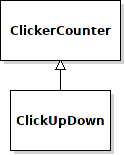Table of Contents
Python Inheritance Fundamentals
Any language that supports object orientation will let you create objects, either by instantiating them from classes or by building them from prototypes. Class-based object orientation becomes significantly more powerful when you are able to use inheritance.
What you'll need to know
- How to create and use a Python class.
- How to use the
@propertydecorator. - How to use parameterized constructors.
What you'll learn
- Inheritance core concept
- Generalization and specialization
- Class heirarchies
- Inheritance and code reuse
- Inheritance in Python
Inheritance
In the real world, we often create hierarchies of things. For example, a vehicle is “a machine that is used to carry people or goods from one place to another”.1) Based on this general concept, we may define a category of two-wheel vehicles that includes bicycles and motorcycles, a category called car that includes sedans, coupes, and convertibles, a truck category that includes buses, vans, tractors, and so on.
In these kinds of hierarchies, we typically start with a general class of things at the root of the tree, and all the other classes of things are more specialized versions of the general class of things.
This is the essence of inheritance in object oriented programming. For example, to solve a particular programming problem, we might define a Person class, and based on that definition we might then define an Employee class, and then based on that Employee class we might define Manager, Staff, and Hourly employee classes.
Or, we might define a general Shape class. Then based on the Shape class we might define Rectangle and Ellipse classes. Then based on the Rectangle class we might define a Square class (a square is rectangle with equal height and width), and based on the Ellipse class we might define a Circle (a circle is an ellipse with zero eccentricity).
Generalization and specialization
In both of the above cases, the classes closest to the root of the tree are more general than the classes toward the bottom. A Square is a special kind of Rectangle and a Rectangle is a special kind of Shape. An Hourly employee is a special kind of Employee, and an Employee is a special kind or Person. For this reason, we often say that inheritance defines “is a” relationships.
Class heirarchies
We call trees of classes like the above class heirarchies. The class at the root of the tree is a base class, and classes that inherit from a base classes are derived classes.2)
Inheritance and code reuse
One of the advantages of implementing classes with inheritance is code reuse. Almost all class-based object oriented languages let you define derived classes without having to re-write the base class code. The idea is that you write the base class code once. Then when you write the derived classes, you add only whatever new code is required for the derived class or new definitions for old code that must be overridden.
Since you do not need to rewrite the code that is common to both base and derived classes, you end up writing less code. But even more important, when you fix a bug in the base class, it automatically propagates to the derived classes.
Inheritance in Python
To demonstrate the use of inheritance in Python, we are going to create a specialized version of one of these:3)

A standard ClickerCounter has two buttons: one for incrementing the count and another for resetting it. We are going to use inheritance to create a special kind of ClickerCounter: one that has an additional button to decrement the counter. In terms of a Python model, a ClickUpDown is identical to a ClickerCounter except that it has an additional method: click_down.
Here is the base class:
# base class definition class ClickerCounter(): def __init__(self): self.count = 0 # accessor for count def get_count(self): return self.count # click the counter def click(self): self.count = self.count + 1 # reset the count def reset(self): self.count = 0
And here is the derived class:
# derived class definition class ClickUpDown(ClickerCounter): # click down the counter def clickdown(self): self.count = self.count - 1
That's it!
Using the new class:
b = ClickUpDown() # instantiate a ClickUpDown object b.click() # 1 b.click() # 2 b.click() # 3 b.clickdown() # should be 2 print b.get_count() a = ClickerCounter() # instantiate a ClickerCounter object a.click() # 1 a.click() # 2 a.click() # 3 a.clickdown() # can't do that! print a.get_count()
What you should do next
This covers the very basics of inheritance in Python. To level up your use of inheritance in Python, you should next have a look at the following:
- Overriding methods.
- Derived class constructors (including calling parent class constructors).
Copyright © 2011-2018 Mithat Konar. All rights reserved.




